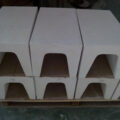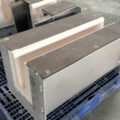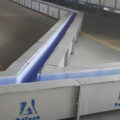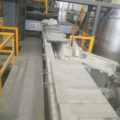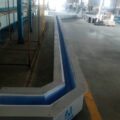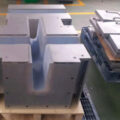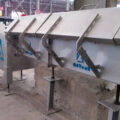The ceramic launder system provides considerable advantages. It decreases the need for embedding materials and the maintenance intervals of the launders that are used in connection with metal casting, any downtime caused by the embedding, and the energy used for preheating and heating the melting furnace during casting.
As the blocking of the launders during casting is reduced, the casting process becomes more reliable. The cover is lightweight, as there are no cables or gas ducts, which are difficult to detach, connected thereto. Accordingly, the cover can be provided with fixed or detachable lifting members and connected to a lifting mechanism. In this way, the cover is easy to move aside during the maintenance and the replacement of the lower part of the ceramic launder system.
For successful and consistent casting on ingot DC casting systems, metal heat loss has to be reduced. Metal heat loss is directly influenced by casting trough and launder design and material selection.
To assist in developing solutions to reduce metal heat loss from furnace to casting table, a CFD modeling program was developed for heat loss analysis from furnace spout to casting station.
The influence of the rotary degasser, CFF units, and automated metal level controls are all included in the program to improve accuracy. Case studies are reported to reveal the influence of refractory geometry and material selection on metal heat loss.
It is shown that when the main launder refractory material is changed from REF-1 to REF-2, heat loss is ~15.0 °C less at start and ~3.5 °C less at run cast at a ~136 kg/min flow rate. A ceramic launder system with a V-Shape cross-section has less heat loss than a trough/launder with a U-Shape cross-section as a result of increased metal flow due to reduced cross-section area and the reduced metal contact surface area.
The reasonable agreement between our modeling results and field measurements show that the developed casting process modeling program can be used to analyze refractory/insulation materials and trough/launder geometry designs.




